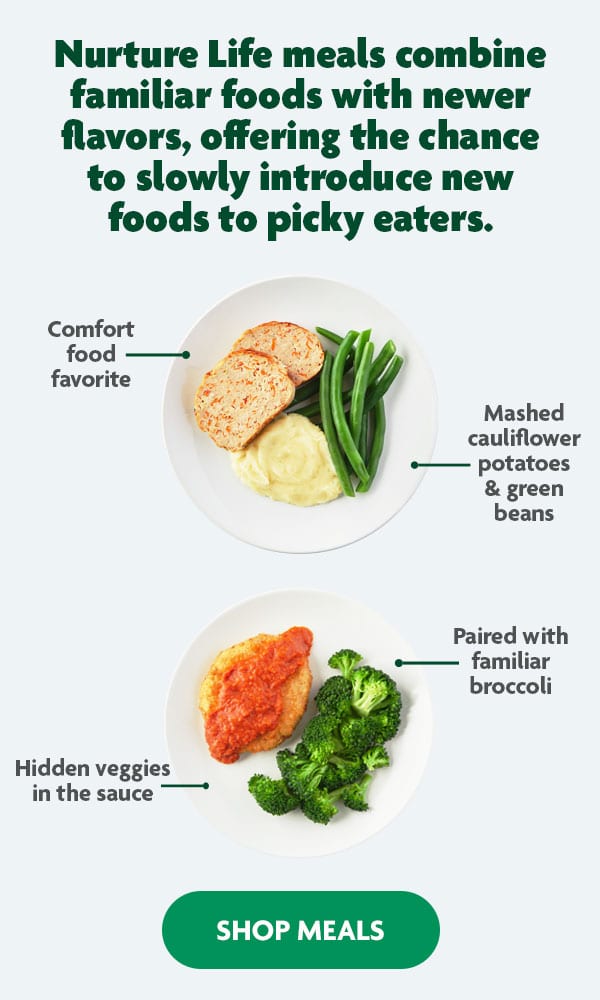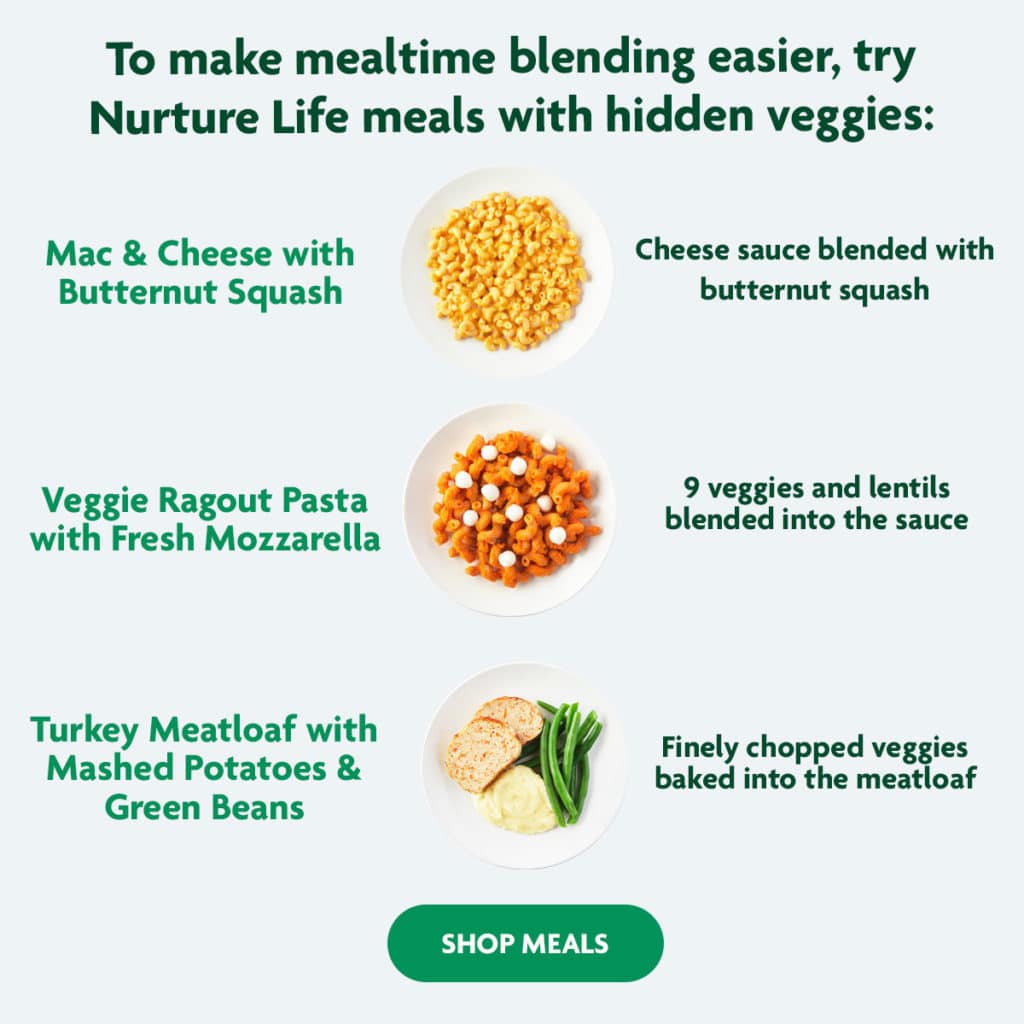How to Overcome Picky Eating: 3 Techniques to Introduce New Foods
When you have a picky eater at home, any meal can become an exercise in tantrums, tears and untouched food. While too much change tends to draw stubborn refusals, too little change may leave you feeling like no progress is being made.
If you’re stuck in this cycle—wondering why your child is refusing food, how to overcome picky eating, or whether it’s even possible at all—this post is for you! Below, we’ll review 3 feeding strategies for picky eaters to help you introduce new foods with fewer meltdowns and more success.
1. Introduce one new food at a time.
Even for adults, change can be stressful. So for a child who’s used to eating her favorite PB&J—prepared like she wants, on the plate she wants, at the time she wants—even a tiny bit of change can lead to mealtime deadlock.
To minimize stress and increase the chance of acceptance, child nutrition experts recommend serving only one new food at a time. Without making a big deal of the change, try introducing one new food at a time:
- Substitute a plain baked potato with a sweet potato, changing nothing else about the meal.
- Pair your kid’s favorite macaroni and cheese with a side of naturally sweet garden peas.
- Serve a new protein, like superfood salmon or fiber-rich tempeh, alongside a familiar whole wheat pasta.
- If you order Nurture Life’s healthy kids meals, select a more adventurous protein and serve it with familiar veggies.
- Switch up the standard peanut butter and jelly sandwich with a fun peanut butter alternative.
Like most advice for picky eaters, this technique may sound easier than it actually is. If your child continues to refuse new foods, don’t lose heart! Consistency will win out in the end—it can take as many as 6–15 tries before a child accepts a new food, so it’s important to keep trying.
2. Try the “one day on, one day off” technique.
Even if your child is relatively accepting of one new food at a time, too many new foods meal after meal may become overwhelming. For that reason, it’s often helpful to give kids a break.
Using the “one day on, one day off” method, you can deliberately introduce new foods without pushing your little one too far. With this technique, new foods are only served every other day and only with well-accepted dishes.
For instance, your first week might look like this:

You’ll repeat this process, both introducing new foods and serving recently introduced foods, for a month or even longer. The more gradually and consistently you offer new foods, the more likely your child is to expect and eventually accept them. You can also support your efforts with fun picky eater tools or even some kid-friendly bedtime stories about picky eating.
3. Blend new and old together.
One of the best picky eater tips is to work with, rather than against, your child’s preferences—at least at the beginning. In some cases, this means getting a little creative!
If your child still refuses new foods after weeks of trying, consider taking a different approach and physically blending foods together. Because you’ll be blending a new food with a familiar one, your little one may not even notice the slight change in color, texture or taste.
This method works for nearly any type of food, allowing you to improve the nutrition on your child’s plate without the protestations. Try these ideas for easy blending:
- Smoothly blend veggies or lentils into a pasta sauce or casserole base, like Nurture Life’s Veggie Ragout Pasta with Fresh Mozzarella
- Mix white rice with brown rice.
- Mash sweet potatoes and white potatoes together.
- Puree fiber-rich legumes into any ground meat dish.
- Chop one new fruit and toss it into your regular fruit salad.
- Incorporate lean ground turkey into hamburgers, meatloaf or meatballs.
Just like the first two tips for picky eaters, it’s best to add only one new food to your child’s plate at a time, even when blending. It’s also a good idea to begin with small increments and work your way up so that the change is not too drastic. For instance, start with a mix of 10% brown rice to 90% white rice and gradually increase the ratio until you’re serving 100% brown rice.
When it comes to picky eating, every child exhibits different behaviors, preferences and responses. Even with these 3 feeding strategies for picky eaters, it’ll take some trial and error before you see real progress—so just remember that with enough consistency, it will get better! You’re already taking the right steps to a healthier, more varied diet for your children.
If you have questions about healthy meals for picky eaters, send our childhood nutrition experts a message at nutrition@nurturelife.com!



